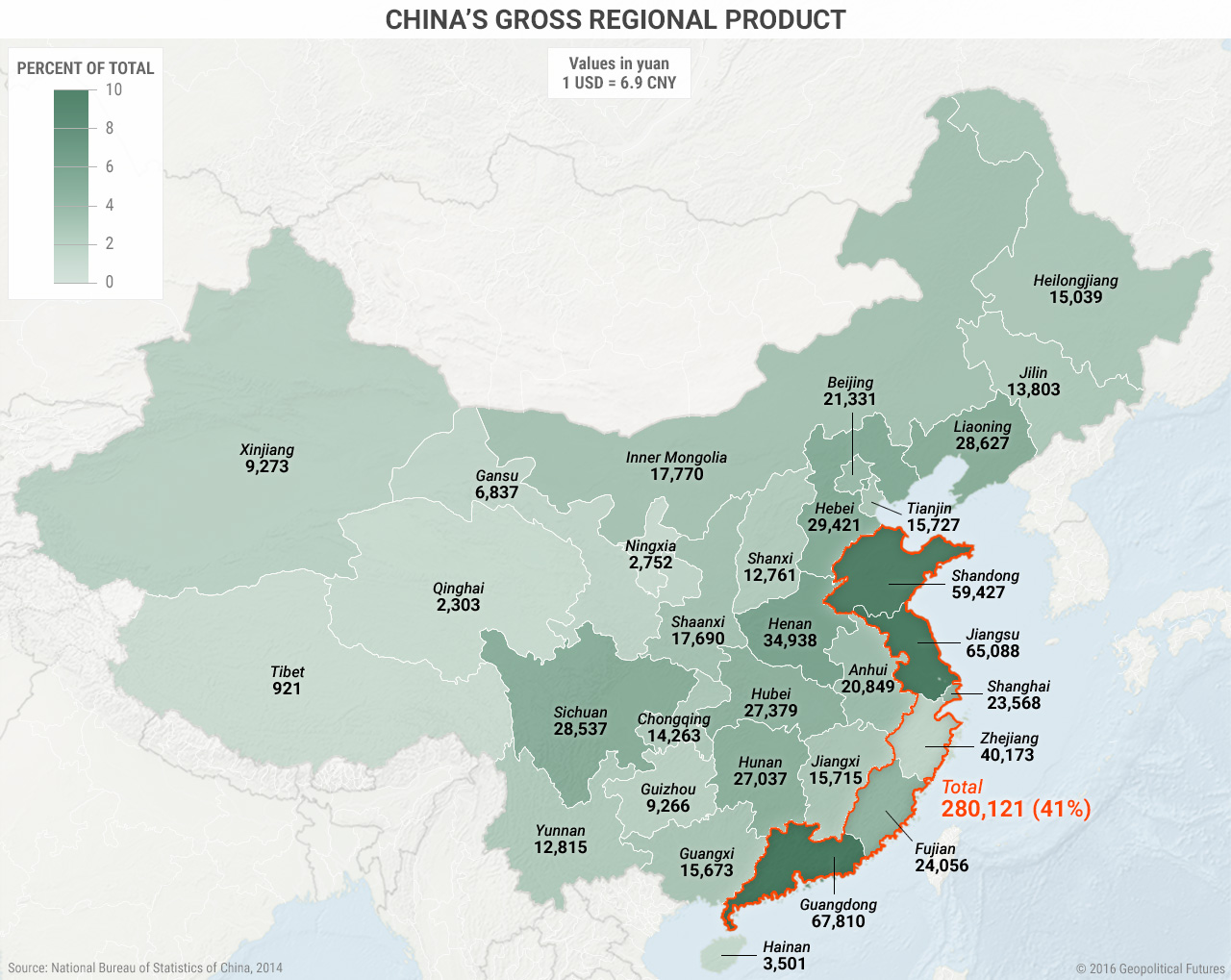The above map shows a striking dichotomy in Chinese society today. Urban households in coastal cities such as Beijing and Shanghai are faring quite well. An urban household’s per capita disposable income is 48,531 yuan in Beijing and 48,841 yuan in Shanghai. McKinsey & Company released a report in 2013 that predicted 75 percent of China’s urban consumers would be middle class by 2022. That’s a whopping 270 million people, which would be a middle class almost the size of the entire United States population. McKinsey expects urban households in the most successful Chinese cities to make 60,000-229,000 yuan a year within the next eight years.
The problem is that the advancement is not spread equally. Even urban households in many of the interior Chinese provinces are earning far less than the per capita average. Meanwhile, cities such as Beijing and Shanghai are doing over 43 percent better than the mean, and urban households in coastal provinces such as Zhejiang or Guangdong are also doing extremely well. To learn more about how this interior-coastal divide and other factors contribute to China’s geopolitical realities, check out our report China’s Strategy.





 Special Collection – The Middle East
Special Collection – The Middle East